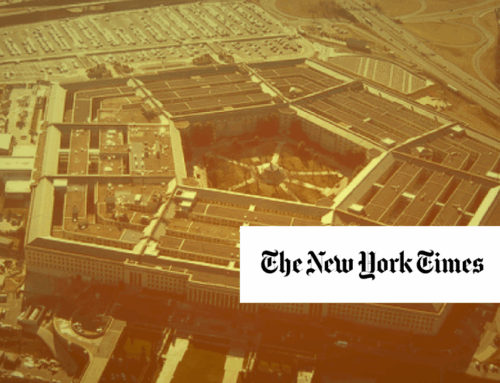In 1998, HBO released a comedy called "Pentagon Wars," (currently stream-able on HBO Max) about unscrupulous practices relating to the development and testing of new weapons systems. Based on a 1993 book, The Pentagon Wars: Reformers Challenge the Old Guard, by former Air Force officer James Burton, the movie satirizes the very real story of the Bradley Fighting Vehicle and the Pentagon's failure to adequately test its design.
In the movie, Lt. Col. James Burton is tasked by Congress with overseeing tests of the overbudget Bradley, and discovers that the tests were essentially rigged—Major General Partridge, aiming to get the vehicle into the field as quickly as possible, had his subordinates remove all the fuel and munitions from the Bradley prior to firing faulty munitions at it to "test" its armor. When Burton manages to get a real test, with accurate field conditions and quality munitions, the first shot fired causes the Bradley to explode.
Twenty-seven years later, the Trump Administration may be working to implement Major General Partridge's vision of a testing environment driven by political expediency and conflicts of interest rather than strategic and practical concerns. On May 27, Secretary of Defense Pete Hegseth issued a memo ordering significant cuts to the Pentagon's Office of the Director of Operational Test and Evaluation (ODOT&E). Specifically, the order directs 1) the elimination of "any non-statutory or redundant functions," meaning any position not required by law, 2) a reduction in staff to 30 civilian positions and 15 assigned military personnel, 3) the placement of all remaining staff, including all ODOT&E leadership, on administrative leave, 4) the elimination of roles fulfilled by private contractors, and 5) the appointment of Mr. Carroll P. Quade, the Deputy for Test and Evaluation for the Department of the Navy, as the acting director of ODOT&E. The order ends with a claim that these actions "will save more than $300 million per year…"
Like many of the Trump Administration's efforts, the concept is not inherently flawed—reducing bureaucracy can save taxpayer dollars, and sometimes that means eliminating unnecessary positions. But the context surrounding this order should raise concerns about the administration's true purpose.
The administration is currently pursuing a number of new Major Defense Acquisition Programs (MDAPs), which ODOT&E is responsible for testing. These include programs like the F-47, a sixth-generation jet that risks repeating many of the mistakes of its predecessor, the infamous F-35 that can only fly and perform all of its missions 30 percent of the time. They also include fantastical and costly programs like the Golden Dome, which President Trump has promised to field before the end of his term, and which physicists have described as a "fantasy."
These plans alone should amplify the alarm bells surrounding this directive, as the administration may be gutting ODOT&E in an effort to speed these programs into the field, whether or not they actually work. But even if that is not the administration's intent, the order could have that effect.
In light of other blatant efforts to replace career civil servants and national security leaders with loyalists, this order reeks of yet another loyalty test for positions that should be apolitical—it sends a clear signal to the remaining ODOT&E staff that if they fail to fast track the president's pet projects, they can be replaced with people who will. By requiring no more than one Senior Executive Service (SES) member at ODOT&E, the order also ensures that new leadership could be replaced without the appearance of another overhaul.
If the end result of this directive is to speed major weapons programs into the field before they're adequately tested, then the $300 million in savings identified by the order could be dwarfed by the tens or perhaps hundreds of billions of taxpayer dollars wasted on programs that don't deliver. It could also put servicemembers at serious risk, and threaten national security by increasing our reliance on faulty technology and diverting resources from programs that work.
If Congress doesn't act, a new generation of untested military tech could make the Bradley Fighting Vehicle's explosive failure look like just another day in the Office of the Director of Operational Test & Evaluation. As the House and Senate Armed Services Committees prepare to take up the National Defense Authorization Act (NDAA), questioning this directive and ensuring ODOT&E remains apolitical should be points of emphasis for lawmakers committed to fiscal responsibility, servicemember safety, and national security.
- Department of Defense Courtesy Photo










